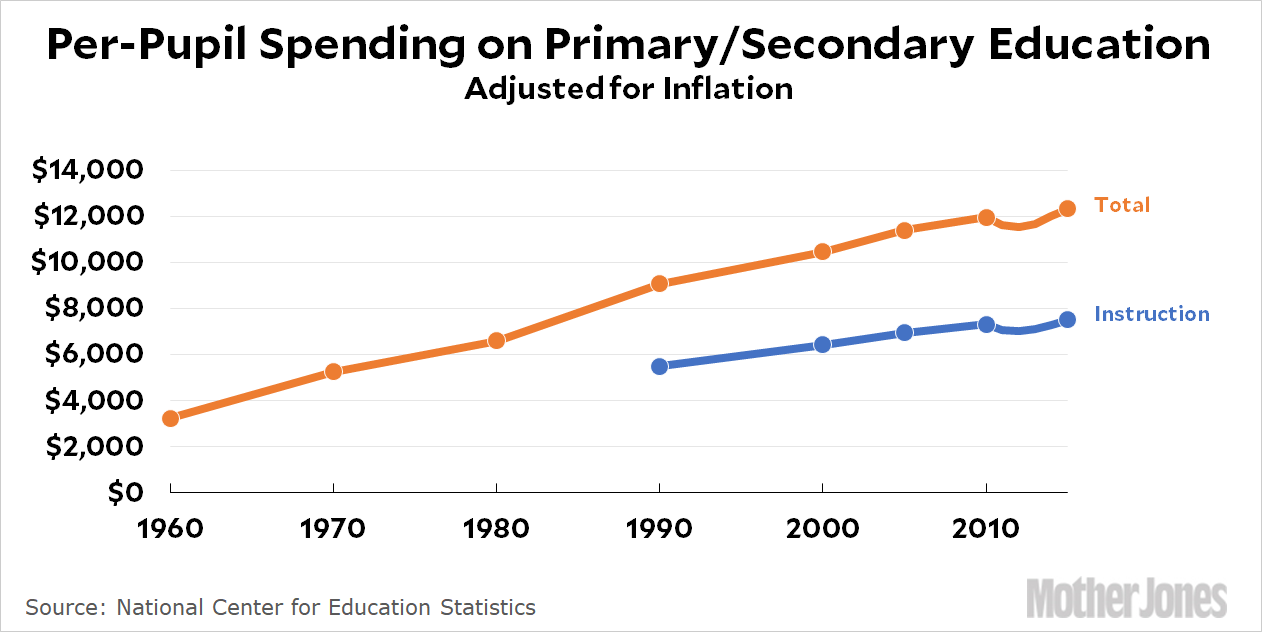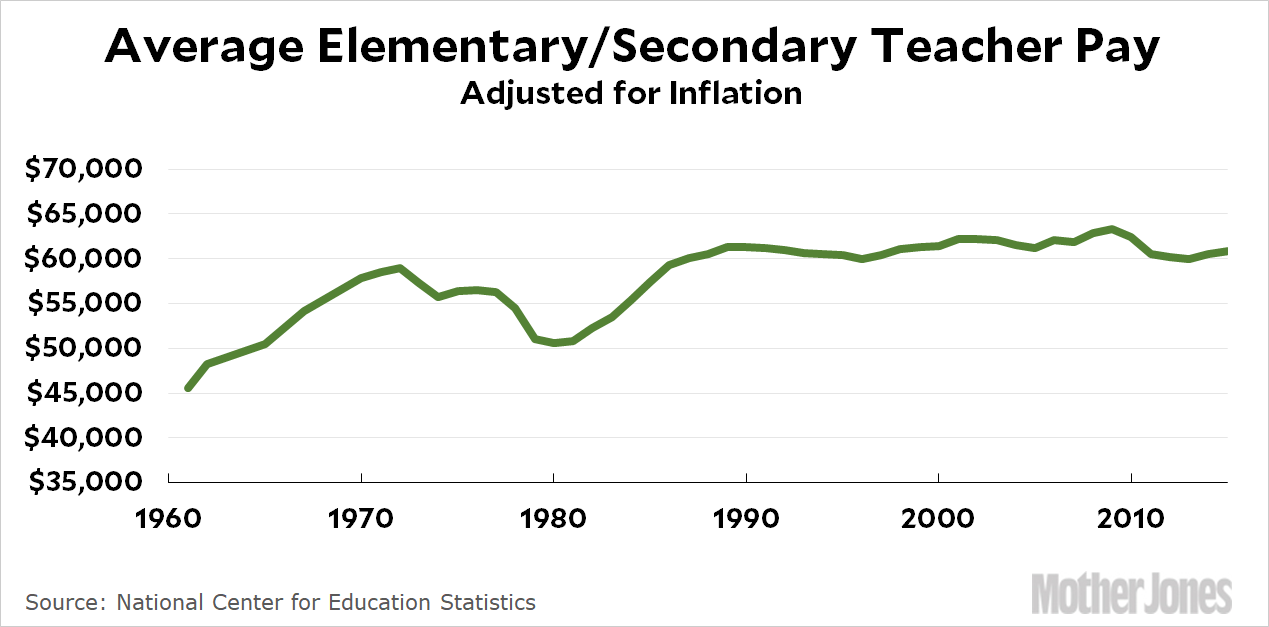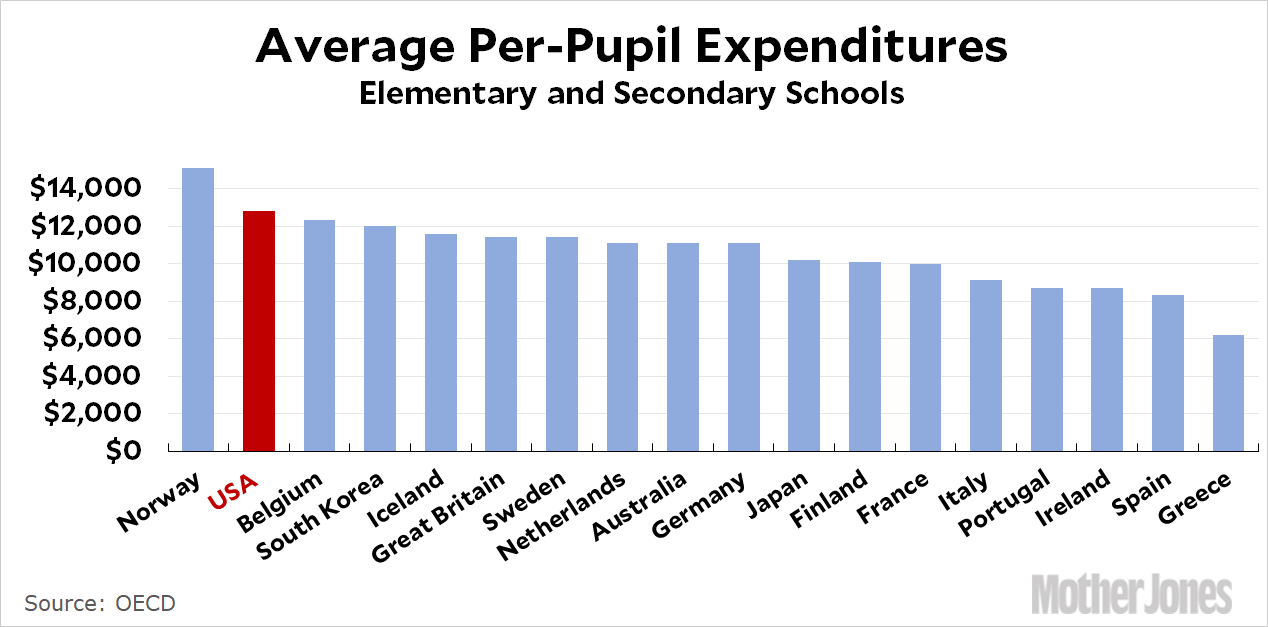Bob Somerby complains today about an op-ed in the New York Times arguing that lots of poor schools get less funding than rich schools. The issue, it turns out, isn’t money per se; it’s the fact that poor schools attract lots of new teachers who are paid less than more experienced teachers. This disparity in teacher pay amounts to about $1,200 per student.
This got me curious about basic school funding statistics. Here is per-pupil spending in elementary and high schools:

Total spending per pupil has doubled since 1980 and quadrupled since 1960. Both total spending and instructional spending have increased by a third since 1990. And if you’re thinking that this increase is a mirage because all the money—and more!—just goes to higher teacher salaries demanded by militant teacher unions, think again:

Teacher pay jumped in the ’60s but it’s gone nowhere since then. It’s actually gone slightly down since 1990. The increase in instructional spending comes from more aides, more counselors, more computers, and so forth. And our school spending is ahead of most of the rest of the world:

With the exception of the oil-driven socialists in Norway, we spend more money on public schools than any other country in the world.
Now, this may be fair. For one thing, the top ten non-Norwegian countries all spend about the same amount. We’re not a leader, we’re just comfortably among the high spenders. And it’s easy to argue that our national history of racism has produced a situation that requires higher spending for education than more homogeneous countries like Iceland and Japan. Merely spending as much isn’t enough.
But even with all that said, and even conceding the problem with teachers opting to leave poor schools when they get the experience and seniority to do so, spending on education has gone up a lot in the United States. A per-pupil difference of $1,200 between poor and rich schools is small potatoes compared to the average increase of $7,000 across all schools since 1980.
I’m not arguing here that we shouldn’t be concerned about equitable school funding. Of course we should be. In fact, poor school districts should get more funding, not just equitable funding, since they obviously have both tougher educational problems than rich school districts and fewer parents able to donate extra cash for extracurricular activities. Nonetheless, I think it remains a fact that whatever our educational problems are, money is not at the root of them. The problem with experienced teachers, for example, isn’t really a money problem even though it can be converted into a dollar equivalent. Our problems lie elsewhere, and we’d do well to figure out exactly where that is.













